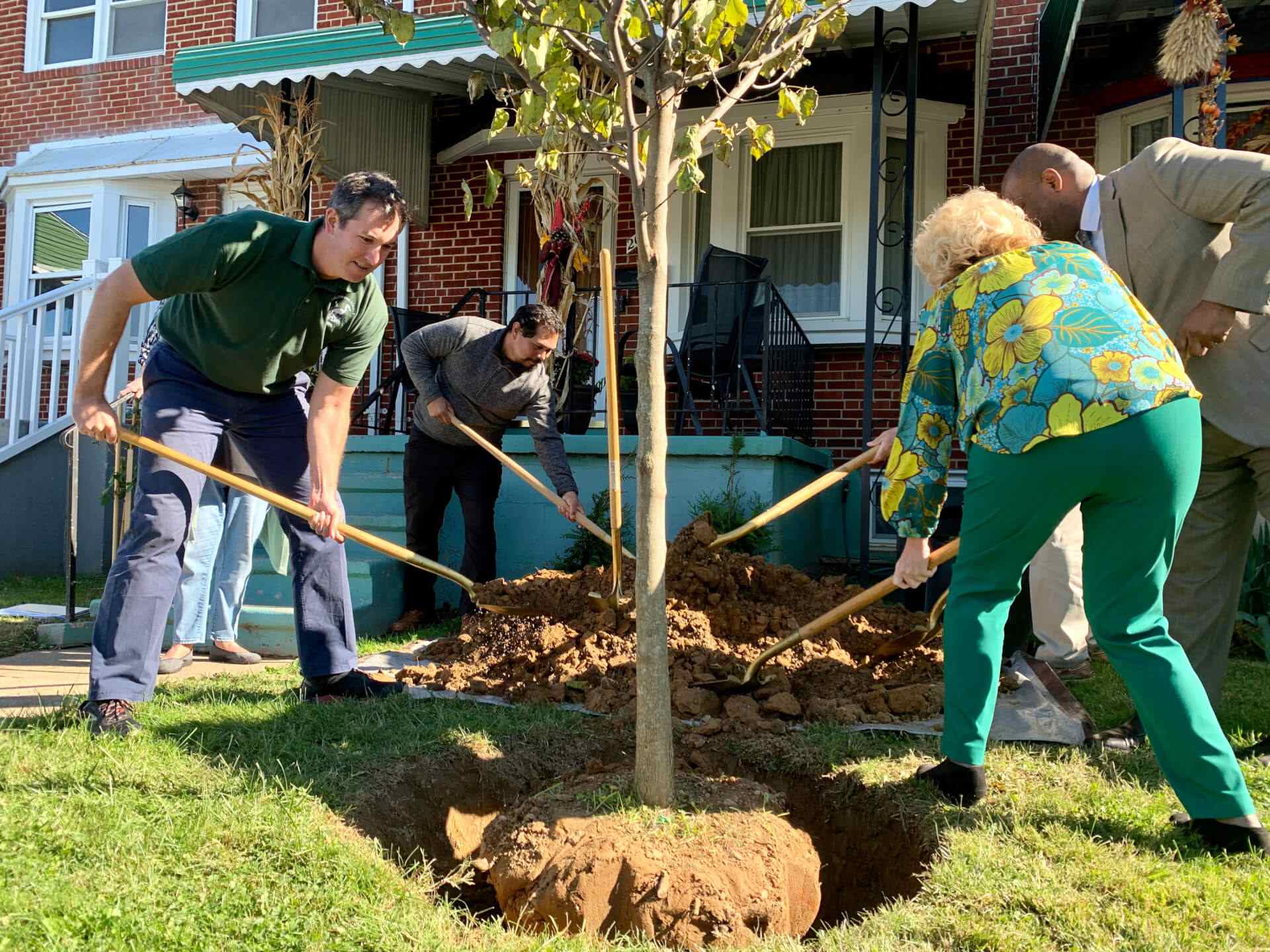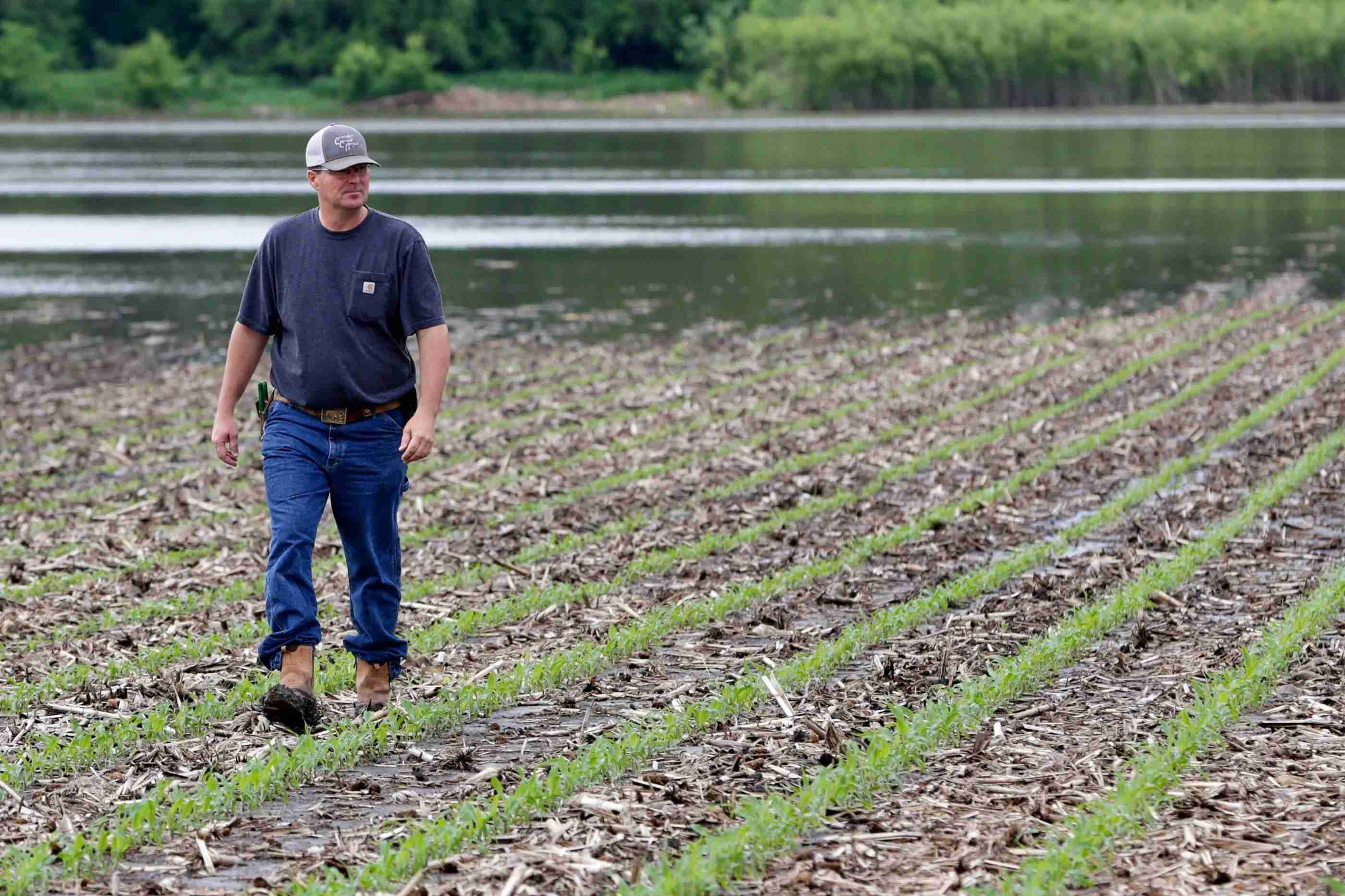Home>Gardening Basics>Understanding Soil>What Zone Is Ohio In For Planting


Understanding Soil
What Zone Is Ohio In For Planting
Modified: January 22, 2024
Find out what zone Ohio is in for planting and gain a better understanding of soil to maximize your gardening success.
(Many of the links in this article redirect to a specific reviewed product. Your purchase of these products through affiliate links helps to generate commission for Chicagolandgardening.com, at no extra cost. Learn more)
Table of Contents
Introduction
Welcome to the world of gardening in Ohio! If you’re considering starting a garden or adding new plants to your existing landscape, it’s important to understand the concept of planting zones. Each region has its own unique climate and environmental conditions, and planting zones help gardeners determine which plants are best suited for their area.
Ohio, known for its diverse landscapes and moderate weather, offers a wonderful environment for gardening enthusiasts. Before you start planning your garden, it’s crucial to know which zone Ohio falls into for planting. This knowledge will guide you in selecting plants that can thrive and withstand the specific climate conditions in your area.
In this article, we will delve into the details of Ohio’s planting zones, explore the climate and location factors that influence plant growth, and provide you with insights on the best plants for your specific planting zone.
So, whether you’re a seasoned gardener or just starting out, let’s dive into the fascinating world of Ohio’s planting zones and discover the abundance of flora that awaits you!
Understanding Planting Zones
Planting zones, also known as hardiness zones, are geographic areas that are categorized based on their climate and temperature differences. These zones are determined by the United States Department of Agriculture (USDA) and provide valuable information to gardeners, helping them select plants that are most likely to survive and thrive in their specific region.
The USDA uses a zone map that divides the United States into different zones, each representing a specific range of average minimum winter temperatures. The zones are delineated by a numerical system, with Zone 1 being the coldest and Zone 13 being the warmest.
Understanding your planting zone is vital because different plants have different temperature requirements for optimal growth. Some plants are more cold-tolerant and can withstand freezing temperatures, while others thrive in warmer climates.
Planting zones also help gardeners determine the appropriate timing for planting and harvesting crops. By knowing the first and last expected frost dates in their zone, gardeners can plan their gardening activities accordingly and maximize their chances of success.
It’s important to note that planting zones are just one factor to consider when selecting plants. Other factors such as soil type, sunlight exposure, and moisture levels also play crucial roles in determining plant success. However, understanding your planting zone can be a helpful starting point in making informed decisions about the right plants for your garden.
Now that we have a basic understanding of planting zones, let’s explore the specific climate and location of Ohio to determine its designated planting zone.
Climate and Location of Ohio
Ohio, situated in the Midwest region of the United States, experiences a diverse climate influenced by its location and topography. The state is characterized by four distinct seasons, with hot summers and cold winters.
Due to its proximity to the Great Lakes, Ohio’s climate is considered continental, meaning it has a significant temperature range throughout the year. The presence of the lakes helps moderate temperatures, preventing extreme heat in the summer and extreme cold in the winter.
Summers in Ohio are generally warm and humid, with average temperatures ranging from the mid-70s to the low 90s Fahrenheit (mid-20s to low 30s Celsius). However, occasional heatwaves can drive temperatures even higher.
Winters in Ohio can be cold and snowy, with average temperatures in the 20s and 30s Fahrenheit (-6 to 1 degree Celsius). However, temperatures can drop below freezing, especially during the months of January and February.
The state also experiences a moderate amount of rainfall throughout the year, with precipitation spread fairly evenly. This consistent rainfall, combined with the fertile soil in many parts of Ohio, creates favorable conditions for plant growth.
When it comes to location, Ohio is bordered by Lake Erie to the north, which has a significant influence on the climate of the state. The lake acts as a temperature regulator, keeping the coastal areas cooler in the summer and milder in the winter compared to inland regions.
The topography of Ohio varies, with rolling hills, flat plains, and river valleys. This diversity in landscape contributes to microclimates within the state, where certain areas may experience slightly different temperature and moisture conditions compared to others.
Now that we understand the climate and location factors that impact plant growth in Ohio, it’s time to determine the specific planting zone designated for the state.
The USDA Plant Hardiness Zones
The USDA Plant Hardiness Zone Map is a valuable tool that categorizes different regions of the United States into specific zones based on their average minimum winter temperatures. The map helps gardeners and horticulturists determine which plants are most likely to thrive in their respective areas.
The USDA divides the country into 13 zones, ranging from Zone 1 (coldest) to Zone 13 (warmest). Each zone represents a 10°F (-12.2°C) difference in average minimum winter temperature.
The primary purpose of the USDA Plant Hardiness Zones is to provide guidance on plant selection and help gardeners understand the temperature requirements of various plants. By knowing the zone they are in, gardeners can choose plants that are adapted to their local climate and have a higher chance of survival.
It is important to note that the USDA Plant Hardiness Zones should not be the sole factor in determining plant suitability. Other factors such as soil type, sunlight exposure, and moisture levels also play significant roles in plant growth and survival.
When using the USDA Plant Hardiness Zone Map, it is essential to consider the limitations of the map. The zones are based on historical climate data and do not account for microclimates or extreme weather events that can impact plant growth. It is always wise to consult with local gardening experts or experienced gardeners in your area for additional information and insights.
The USDA Plant Hardiness Zone Map is regularly revised to reflect changes in climate patterns. The latest version, published in 2012, includes more accurate data and improved methodology compared to previous versions.
Now let’s explore how the USDA Plant Hardiness Zones apply to Ohio and determine the specific planting zone for the state.
Determining the Planting Zone for Ohio
To determine the specific planting zone for Ohio, we will refer to the USDA Plant Hardiness Zone Map. The map takes into account the average minimum winter temperatures of different regions to assign them a corresponding zone number.
As we mentioned earlier, Ohio experiences a diverse climate, influenced by its location and proximity to the Great Lakes. Due to these factors, Ohio falls into multiple planting zones.
Most of Ohio is classified as Zone 5, which has an average minimum winter temperature range of -20°F to -10°F (-28.9°C to -23.3°C). This zone is suitable for a wide range of plants that can tolerate cold temperatures and occasional frost.
However, certain regions in Northern Ohio, particularly those near Lake Erie, are classified as Zone 6. Zone 6 has a slightly milder winter climate compared to Zone 5, with average minimum temperatures ranging from -10°F to 0°F (-23.3°C to -17.8°C).
It’s important to note that these zone designations are just guidelines and should not be the sole determining factor in plant selection. Microclimates, local topography, and other environmental factors can influence the actual conditions experienced in specific areas.
To find the exact planting zone for your specific location in Ohio, you can refer to the USDA Plant Hardiness Zone Map. It is also helpful to consult with local gardening experts, nurseries, or extension services, as they have valuable knowledge about the specific conditions in your area.
Now that we know the planting zones in Ohio, let’s explore some of the best plants that thrive in these zones and create beautiful landscapes.
Best Plants for Ohio’s Planting Zone
Ohio’s diverse planting zones provide an opportunity for gardeners to cultivate a wide variety of plants that can thrive in different climate conditions. Whether you’re a fan of annuals, perennials, trees, or shrubs, there are plenty of options to choose from. Here are some of the best plants for Ohio’s planting zones:
- Perennials: Ohio’s Zone 5 and Zone 6 offer excellent conditions for various perennial plants. Some popular choices include coneflowers (Echinacea), black-eyed Susans (Rudbeckia), daylilies (Hemerocallis), and hostas (Hosta spp.). These plants are known for their resilience and ability to withstand Ohio’s cold winters and fluctuating temperatures.
- Annuals: Annual flowers are a great way to add vibrant colors to your garden. Plants like marigolds (Tagetes), petunias (Petunia), and zinnias (Zinnia) are well-suited for Ohio’s climate. They thrive in the warm summers and can tolerate occasional temperature drops in the fall.
- Trees: Ohio’s planting zones support the growth of a wide variety of trees. Some popular choices include maple trees (Acer), oak trees (Quercus), and dogwoods (Cornus). These trees provide shade, beautiful foliage, and can withstand Ohio’s weather conditions.
- Shrubs: Shrubs are excellent additions to any garden, providing structure and beauty. For Zone 5, consider planting shrubs like hydrangeas (Hydrangea), lilacs (Syringa), and potentillas (Potentilla). In Zone 6, you can also explore options such as butterfly bushes (Buddleja) and beautyberry (Callicarpa).
- Vegetables: Ohio’s moderate climate is perfect for growing a wide range of vegetables. From tomatoes and peppers to lettuce and carrots, gardeners can indulge in a bountiful harvest. Be sure to check the specific planting and harvesting times for each vegetable to ensure successful cultivation.
When selecting plants, consider factors such as sun exposure, soil type, and moisture levels in your specific area. These factors will influence plant health and growth. Remember to also factor in any specific gardening preferences you may have, such as attracting pollinators or creating a low-maintenance garden.
By choosing plants that are well-adapted to Ohio’s planting zones, you’ll increase your chances of gardening success and enjoy a beautiful landscape throughout the seasons.
Conclusion
Gardening in Ohio offers a world of possibilities, thanks to its diverse planting zones and favorable climate. By understanding your specific planting zone, you can select plants that are best suited for your area and create a thriving and beautiful garden.
Ohio’s climate, influenced by its location and proximity to the Great Lakes, provides a mix of warm summers and cold winters. Most of the state is classified as Zone 5, which can accommodate a wide range of plants that can withstand colder temperatures. However, certain regions in Northern Ohio near Lake Erie are classified as Zone 6, offering slightly milder winters.
The USDA Plant Hardiness Zone Map serves as a helpful guide to determine your specific planting zone in Ohio, but it’s important to consider additional factors such as microclimates, local topography, and other environmental conditions that can impact plant growth.
When selecting plants for Ohio’s planting zones, consider a variety of options ranging from perennials and annuals to trees and shrubs. Plants like coneflowers, marigolds, maple trees, and hydrangeas are well-suited for Ohio’s climate and can add beauty and vibrancy to your garden.
Remember to also take into account factors like sunlight exposure, soil type, and moisture levels in your specific area. These considerations will contribute to the overall health and growth of your plants.
Whether you’re a seasoned gardener or just starting out, Ohio’s planting zones offer endless possibilities for creating a stunning landscape. Embrace the beauty of Ohio’s diverse climate and explore the wonderful world of gardening in the Buckeye State!










